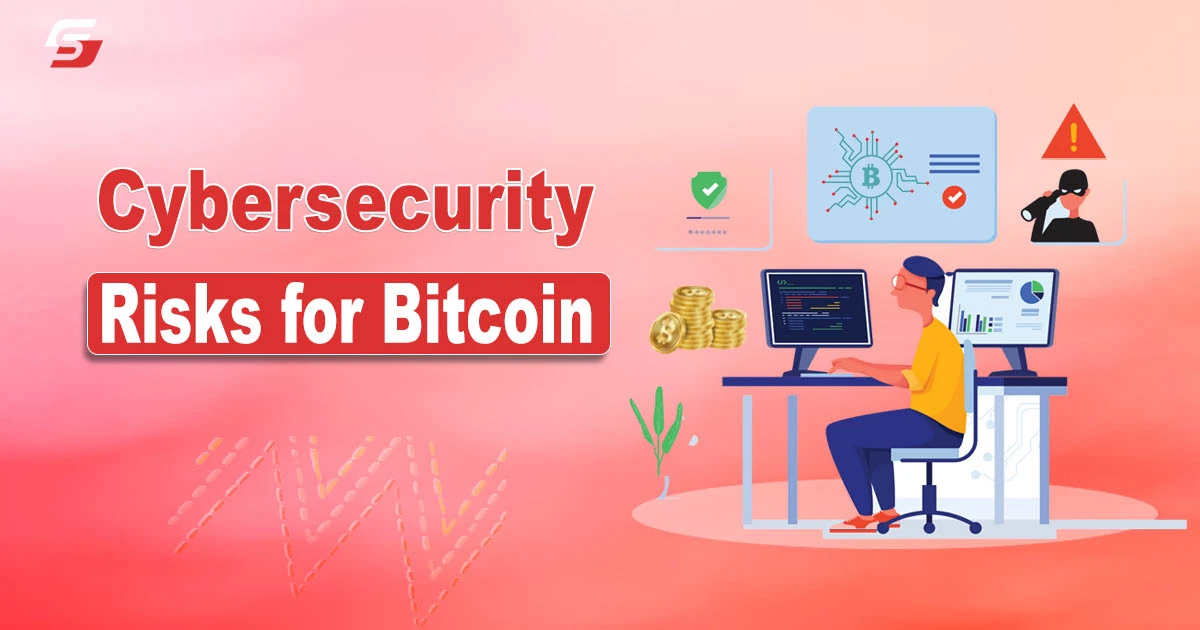Cryptocurrency has become increasingly popular amongst the masses. The technology that was non-existent a few years back is now the most viable and beneficial option for every individual. However, as beneficial as these investment opportunities might sound, there is a substantial amount of risk involved.
There are chances of vulnerabilities existing in the system, which could cost you a lot of money. So, here is a list of cybersecurity risks to understand before getting involved in the process. Hopefully, reading through the following paragraphs will help you save yourself from Bitcoin thefts and other relevant frauds.
Cybersecurity Risks for Bitcoin:
Numerous cybersecurity risks are responsible for the loss of Bitcoin and other cryptocurrencies, which are discussed in the section below.
Malware Risks
Malware risks are the most common when it comes to cyberattacks involved in Bitcoin and other types of cryptocurrency. These malware risks and phishing techniques allow hackers to steal personal data like passwords and private keys.
In such attacks, hackers pose as authentic individuals and use fake emails to convince users to share personal details. A user who is unaware of malware attempts might not be able to suspect anything and end up sharing details. Therefore, it is necessary to be aware of malware risks and phishing attempts.
If you are considering investing in crypto or need guidance on protecting yourself from possible threats, visiting a crypto lawyer could be an optimal solution. They can help by sharing knowledge of different attacks and providing valuable advice on preventing fraud.
51% Attacks
A highly effective and dangerous attack within the blockchain network is the 51% attack that allows hackers to claim control of most of a network’s computational power. Which means the attacker is in control of the mining process.
Luckily, these attacks are expensive and don’t just happen every day. To initiate a 51% attack, an individual requires high-cost hardware and a significant investment of nearly millions of dollars.
Unregulated Exchanges
Trading in cryptocurrency might be thrilling but involves an equal amount of risk. As every crypto trader knows, digital currency is decentralized, so there isn’t an authority overseeing the entire process. Neither the government nor any official body oversees this operation. Thus, these unregulated exchanges are at a greater risk of being attacked.
Companies have lost millions of dollars worth of Bitcoin overnight. Before investing your entire life’s savings in these options, be sure to understand that there are no security audits or assessments involved when it comes to crypto exchanges.
Double Spending Problems
There is also the issue of double spending within the blockchain network. It’s a system vulnerability where a single unit of digital currency is used twice. Since crypto is a form of data, it’s easy to copy and share it twice or more.
Attackers use this weakness to initiate multiple transactions with the same coins. They send the same coin to different receivers, resulting in fraud.
Often, networks that don’t implement multiple confirmations for an exchange face more double-spending incidents. Crypto owners should use platforms that don’t have such weaknesses.
Sybil Attacks
Crypto dealers should also be aware of Sybil Attacks. This form of attack is where hackers or malicious parties use a single node to operate several fake decentralized identities.
The initiators of a Sybil attack aim to target systems where decisions are influenced by the majority of users, like in decentralized communities. Once a user creates enough fake identities, it can dominate the entire network and modify transactions as per their suitability.
In such cases, the rate of double spending increases significantly and leads to losses for individuals.
Distributed Denial of Services (DDoS) Attacks
DDoS attacks are equally threatening as attackers flood networks with unnecessary and false transactions. It results in the system being unavailable to users for lengthy periods.
When the system is already overflowing with transactions, it won’t cater to new requests, and you won’t be able to make any legitimate transactions.
Understanding Bitcoin’s Security Layers and Mitigating Risks

The decentralized system helps maintain transparency across the network. If anyone tries to tamper with the system or create fake blocks, they won’t be able to succeed. Similarly, the transactions are all linked cryptographically to avoid any unwanted tampering.
There are several hashing and encryption systems to prevent data leaks and security issues. Together, these concepts help secure transactions and make the system efficient for regular use.
Blockchain networks run on a distributed ledger technology to provide security to users. The system comprises three concepts: decentralization, consensus, and cryptography.
Still, vulnerabilities are always present in the system, and attackers can use these loops for their benefit. Thus, every user must make an effort to save themselves from fraud.
Some great solutions are using multi-factor authentication on wallets or having cold storage for long-term use of the currency. Even biometric verification systems and regular software updates can make your account more secure.
Final Words
Dealing with Bitcoin and cryptocurrency can be attractive, but it involves a significant amount of risk. Multiple types of attacks and threats could put users in a compromised state.
The best way to save oneself is by gaining extra knowledge and deploying all possible security measures to save oneself from fraud. Also, try reaching out to experts in cryptocurrency matters. The more information you gain, the lower the risk.


